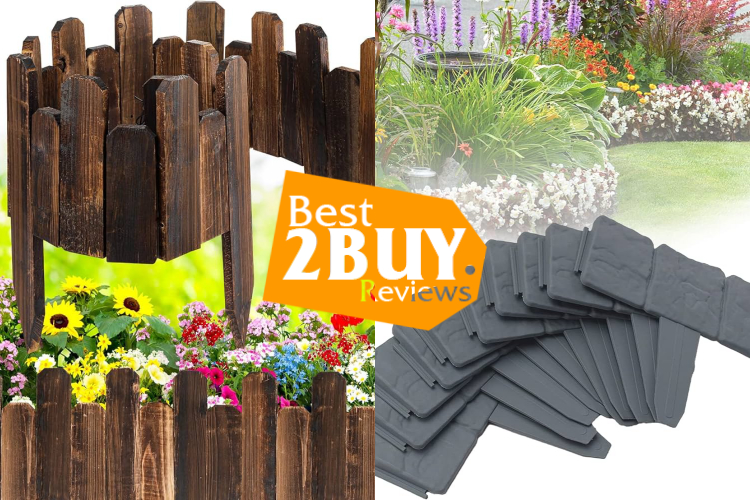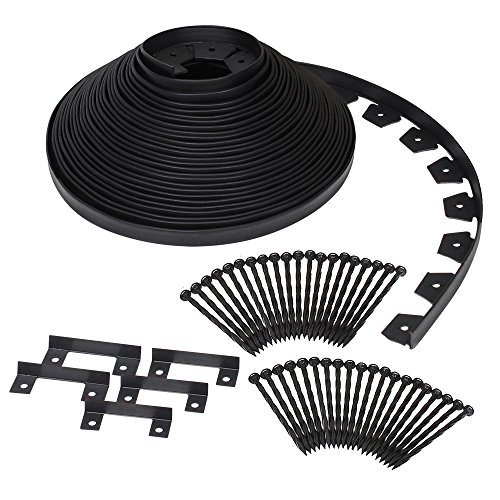How to Choose the Garden Edging
Enhancing Your Garden's Beauty: The Ultimate Guide to Garden Edging

- 1. Enhancing Your Garden's Beauty: The Ultimate Guide to Garden Edging
- 1.1. Benefits of Garden Edging
- 1.1.1. Visual Appeal
- 1.1.2. Weed Control
- 1.1.3. Soil Retention
- 1.1.4. Pathway Definition
- 1.1.5. Landscape Protection
- 1.2. Different Types of Garden edging
- 1.2.1. Traditional Stone Edging
- 1.2.2. Brick or Concrete Pavers
- 1.2.3. Metal Edging
- 1.2.4. Wooden Edging
- 1.2.5. Plastic Edging
- 1.3. Choosing the Right Edging
- 1.3.1. Style
- 1.3.2. Durability
- 1.3.3. Color
- 1.3.4. Cost
- 1.3.5. Strength and Simplicity
- 1.4. Conclusion
- 1.1. Benefits of Garden Edging
Garden edging plays a crucial role in enhancing the visual charm and structure of a garden. It serves dual functions, fulfilling both practical and ornamental roles by establishing distinct boundaries for various garden components and introducing visual allure. Within this in-depth manual, we will delve into diverse garden edging options, the advantages they bring, and guidance on selecting and installing the most suitable edging for your garden.
Benefits of Garden Edging
Visual Appeal
One of the primary benefits of garden edging is its ability to enhance the overall aesthetics of your garden. Edging provides a clean and polished look by creating distinct borders between different sections of the garden. Whether you opt for traditional materials like stone or brick or more modern options like metal or plastic, garden edging adds a finishing touch that brings a sense of order and organization to your outdoor space.
Weed Control
A constant battle for gardeners is keeping weeds at bay. Garden edging serves as a barrier, effectively preventing weeds from infiltrating your garden beds. By creating a physical separation between the soil in your garden and the surrounding grass or other areas, edging reduces the likelihood of weeds encroaching on your carefully cultivated plants. This not only saves time and effort in ongoing maintenance but also promotes the health of your garden by minimizing competition for nutrients and water.
Soil Retention
Erosion can be a significant concern for gardens, particularly in areas with sloping terrain or heavy rainfall. Garden edging plays a crucial role in soil retention by creating a boundary that helps keep soil and mulch in place. This not only prevents unsightly soil spillage onto paths and walkways but also maintains a neat and tidy appearance throughout your garden. By reducing soil erosion, garden edging contributes to the overall health of your plants, ensuring they receive the necessary nutrients for optimal growth.
Pathway Definition
Garden pathways are essential for navigating and enjoying your outdoor space, but without proper definition, they can quickly become messy and lose their appeal. Edging helps to clearly define pathways by creating a distinct border between the walkways and the surrounding garden beds. This not only adds a sense of order but also prevents soil or mulch from spilling onto the pathways, keeping them clean and well-maintained.
Landscape Protection
In a thriving garden, plants can sometimes grow beyond their designated spaces, leading to an overcrowded and disorganized appearance. Garden edging acts as a protective border, preventing plants from encroaching on each other's territory. Additionally, it provides a barrier against trampling, safeguarding delicate plants from accidental damage. This aspect of edging ensures that each plant has its designated space to flourish, contributing to a well-organized and visually pleasing landscape.
Different Types of Garden edging
Traditional Stone Edging
- Natural stone, such as limestone or granite, offers a timeless and durable option for garden edging.
- Creates a rustic and classic look, enhancing the overall charm of the garden.
- Requires professional installation but provides long-lasting results.
Brick or Concrete Pavers
- Easily customizable and available in various shapes, sizes, and colors.
- Provides a clean and structured appearance to garden beds and pathways.
- DIY-friendly, allowing for creative patterns and designs.
Metal Edging
- Ideal for a modern or minimalist aesthetic.
- Lightweight, durable, and resistant to weather conditions.
- Easy to install and can be curved or straight to fit the garden's design.
Wooden Edging
- Offers a natural, warm, and versatile option for garden borders.
- Can be easily customized and stained to match the garden's theme.
- Regular maintenance is required to prevent decay and extend its lifespan.
Plastic Edging
- Affordable and lightweight.
- Easy to install and available in various styles and colors.
- Suitable for creating clear divisions between different garden elements.
Choosing the Right Edging
Now that you've gained a better understanding of the purpose of garden edging, there are several factors to contemplate before commencing your project. These considerations encompass the selection of a suitable style and material, along with an assessment of durability and cost.
Style
While garden edging primarily serves functional purposes, it is advisable to opt for a style that harmonizes with the overall aesthetic of your home and garden, reflecting your personal taste. It is suggested to choose materials and colors that complement your existing garden themes, coordinating with your furniture and the overall outdoor ambiance. Whether you prefer your garden edges to make a bold statement or seamlessly integrate with your home, the style choices should align with your overall design vision.
Durability
It is imperative that anything installed in your garden exhibits longevity. This may entail investing in a more robust material that can withstand the challenges posed by outdoor elements, including weather, lawnmowers, moisture, and other gardening equipment. Choosing a durable material, even if it requires a slightly higher investment, not only ensures the longevity of your garden edging but also provides peace of mind regarding its sustained functionality over time.
Color
The choice of edging color significantly influences the appearance of your garden. Opt for landscape edging in a shade that harmonizes with or starkly contrasts the nearby foliage and flowers. In informal settings, connect the edging to the garden bed by incorporating plants with similar hues. In more formal garden arrangements, maintain uniformity by employing consistent materials like steel, wood, brick, or prefabricated masonry for both the beds and edging.
Cost
Expenses are contingent upon the type and quantity of material. For instance, reclaimed stones might come at no cost, while tiles or bricks could incur significant expenses.
If you aspire to incorporate a pricier edging material, contemplate its judicious use, reserving it for prominent and frequented areas, such as the front yard, or employing it as an embellishment near focal points in the garden. Cost-effective materials, which are both aesthetically pleasing and practical, can be applied in other areas of the garden.
Moreover, factor in the installation costs when outlining your landscape edging plans. The costs of installing different materials vary, as does the feasibility of undertaking the project yourself. Certain materials necessitate professional installation or specialized tools to achieve the desired outcome, while others are well-suited for a straightforward do-it-yourself endeavor.
Strength and Simplicity
Regardless of the chosen material, the principles of strength and simplicity should guide your decision-making. Carefully evaluate options based on anticipated wear and tear, environmental impact, budget allocation, and proceed accordingly. For instance, if frequent use of a whipper snipper or lawnmower is expected, stone edging may be more suitable than wire. Similarly, for those residing in tropical areas, bamboo could be a preferable choice over timber. By keeping strength and simplicity in mind, you ensure a resilient and aesthetically pleasing garden edging solution tailored to your specific needs.
Conclusion
Enhancing the beauty and functionality of your outdoor space is easily achieved with garden edging—a versatile and practical solution. Whether you're drawn to the timeless allure of natural stone, the contemporary aesthetics of metal, or the inviting warmth of wood, the right edging choice has the power to turn your garden into a well-defined, organized, and visually striking oasis. Thoughtfully assessing your garden's requirements and aligning them with your personal style allows you to choose and install the ideal edging, unveiling the full potential of your outdoor sanctuary.










